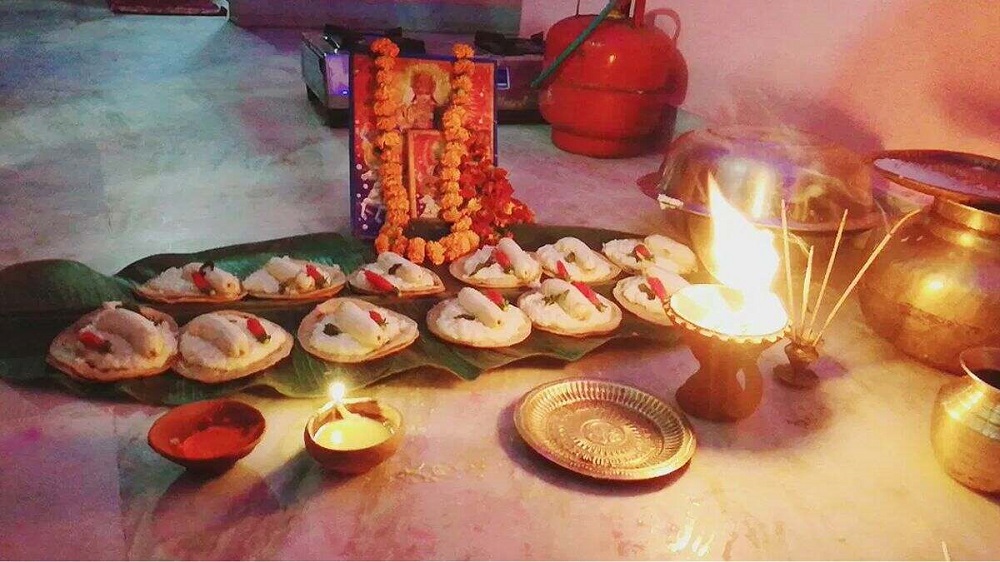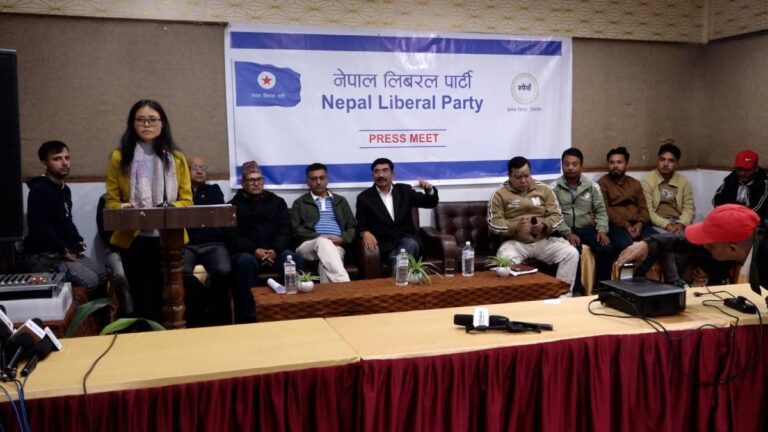
xr:d:DAFyQg6tF70:2,j:2331019917785173792,t:23102511
The second day of the Chhath festival, known as Kharna, is being observed today (Sunday) by worshipping Lord Surya (Sun God). Kharna is believed to purify the soul and is considered the day when sins are washed away.
During Kharna, devotees smear the ground with cow dung and decorate it using a mixture made from rice flour. They observe a day-long fast without water. In the evening, after sighting the moon, a special kheer (rice pudding) made from jaggery, milk, and gamhari rice (a local rice variety harvested in Mangsir) is cooked on a new clay stove using new clay pots. This sacred kheer is first offered to Kul Devta (family deity) and Chhathi Maiya (Goddess Chhathi), and then consumed by the fasting devotees.
In some households, roti is also prepared along with kheer. The offerings (naivedya) are placed on banana leaves along with kheer, milk, bananas, radish, betel leaves, and betel nuts before being offered to Chhathi Maiya. After the rituals, the prasad is shared among family members.
After the Kharna ritual, devotees prepare for the most austere phase of the festival with greater devotion, discipline, and purity.
Upcoming Rituals of Chhath
- Third Day (Kartik Shukla Shashthi):
Devotees observe a strict fast without water (Nirjala Vrat) and in the evening, they go to ponds, rivers, or lakes to offer the first Arghya to the setting sun while standing in water. In the Mithila region, this ritual is known as “Sajhuka Arghya” or “Sanjhiya Ghaat”. - Fourth Day (Saptami):
The next morning, devotees offer the second Arghya to the rising sun, marking the conclusion of the festival. This is called “Bhor ka Arghya” or “Paran”. During Arghya, offerings such as coconuts with husk, fruits including bananas, and homemade sweets are presented to the Sun God.
Cultural Significance
According to Mithila culture expert Rambharosh Kapadi, the prasad of Chhath includes thekuwa and bhuswa, along with other traditional sweets prepared using flour ground by hand using traditional tools like dhiki and janto. Cleaning and decorating the banks of water bodies for Arghya offerings is considered highly important.
Once mainly celebrated by Madhesi Hindus, Chhath has now become a widely celebrated festival across Nepal, even in hill regions. People of all religions and communities participate. In Mithila, even some Muslim families respectfully join by helping devotees during Arghya.
Sociologist Nagendra Dubey says Chhath has become an inseparable part of Mithila folk culture due to its inclusiveness and spiritual significance.
Currently, people in Madhesh Province including Mahottari are actively preparing for the festival. Markets are crowded with devotees purchasing worship materials. Ponds, rivers, lakes, and water wells are being beautified and decorated for the grand celebration of Chhath.
Preparations for Chhath Ghats in all 15 local levels of Mahottari district are in the final stage, with ponds being decorated and illuminated beautifully in anticipation of the rituals.




